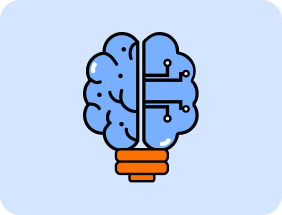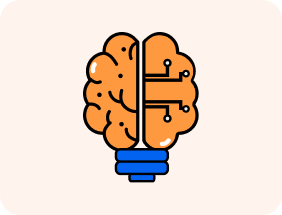Importance Of Soft Skills In Futuristic Workplace (2025 & Beyond)
The world of work is changing faster than ever. With automation, artificial intelligence (AI), and digital tools taking over technical tasks, the qualities that will set professionals apart in 2025 and beyond are no longer just technical skills. Instead, soft skills in the workplace like communication, collaboration, adaptability, and critical thinking are becoming the foundation of career success.
While technical knowledge still matters, the balance between soft skills vs technical skills in workplace settings has shifted. Technical skills can often be automated or replaced by new technologies, but soft skills, our ability to connect, empathize, solve problems, and lead people, remain uniquely human. For future-ready professionals, mastering these abilities will be the key to thriving in an unpredictable, fast-paced workplace.
This article explores why soft skills are so important in 2025 and beyond, the top soft skills for workplace success, and practical ways to develop them.
What Are Soft Skills?
Soft skills are often described as the “human” side of work, interpersonal, emotional, and cognitive abilities that allow people to work effectively with others. Unlike technical knowledge, which is job-specific, soft skills apply across industries and roles.
Some common examples include:
Communication skills (verbal, written, and non-verbal)
Emotional intelligence and empathy
Problem-solving and critical thinking
Teamwork and collaboration
Adaptability and resilience
Leadership and decision-making
Time management and organization
In short, soft skills are the workplace skills that shape how we interact, lead, and grow. They are not just “nice-to-have” qualities anymore, they are essential for building strong, future-ready teams.
The Shift: Why Soft Skills Matter More in 2025
The nature of work is evolving quickly, and the abilities that once guaranteed career success are no longer enough on their own. While technical knowledge remains useful, organizations are realizing that human-centered skills drive long-term growth and collaboration. This shift highlights why soft skills in the workplace are becoming more valuable than ever in 2025 and beyond.
1. Automation and AI Reducing Dependence on Technical Skills
By 2025, many routine technical tasks will be handled by machines. From data entry to coding assistance, AI tools will make technical work faster and easier. But what AI cannot replace are human qualities like creativity, empathy, ethical decision-making, and leadership. This is why companies now emphasize soft skills vs technical skills in workplace hiring practices.
2. Global and Hybrid Work Environments
The rise of remote and hybrid work means professionals interact with diverse colleagues across borders. Strong soft skills in the workplace, such as communication and cultural sensitivity, are necessary to avoid misunderstandings and build trust in global teams.
3. Complex Problem-Solving
Modern challenges, from climate change to global supply chain disruptions—cannot be solved with technical expertise alone. They require collaboration, negotiation, and creative thinking, making soft skills a core part of problem-solving.
4. Employee Retention and Growth
Organizations have realized that investing in future-ready professionals with soft skills leads to stronger leadership pipelines, happier teams, and lower turnover. Soft skills enhance workplace culture and long-term engagement.
Top Soft Skills for Workplace Success in 2025 and Beyond
As the workplace transforms, employers are prioritizing abilities that strengthen collaboration, problem-solving, and adaptability. These workplace skills are not just nice-to-have but essential for becoming a future-ready professional. Below are the top soft skills for workplace success that every individual should focus on developing in 2025 and beyond.
1. Communication Skills
Strong communication remains one of the top soft skills for workplace success. It includes:
Clear written communication in emails, reports, and presentations.
Confident verbal skills for meetings and negotiations.
Active listening to truly understand colleagues and clients.
In 2025, where much of work happens online, concise and empathetic communication will decide how effectively professionals collaborate.
2. Emotional Intelligence (EI)
Emotional intelligence, or the ability to recognize, understand, and manage emotions (both your own and others’), is now a critical workplace skill. It helps employees:
Build stronger relationships.
Handle conflicts calmly.
Motivate and support team members.
EI is often what differentiates a good leader from a great one.
3. Adaptability and Resilience
The future workplace is unpredictable. New tools, industries, and challenges will continue to emerge. Professionals who can adapt quickly, learn continuously, and bounce back from setbacks will stand out.
4. Collaboration and Teamwork
Even in a digital-first world, no one works in isolation. Being able to collaborate across teams, functions, and geographies will be one of the most valuable skills for workplace success.
5. Critical Thinking and Problem-Solving
With overwhelming amounts of information and data available, critical thinking helps professionals filter noise, analyze situations, and make sound decisions. Problem-solving goes beyond fixing issues, it requires innovation and creativity.
6. Leadership Skills
Leadership isn’t limited to managers. Every professional in 2025 will need leadership qualities: inspiring others, taking initiative, and guiding projects. Leadership is among the graduate employability skills that employers consider most critical.
7. Creativity and Innovation
As routine tasks are automated, creative thinking will fuel growth. Professionals who generate new ideas, challenge norms, and propose innovative solutions will drive progress in every industry.
8. Time Management and Organization
With multiple projects, deadlines, and hybrid work challenges, time management will remain a highly valued career skill. Prioritizing tasks and staying organized will prevent burnout and increase productivity.
9. Cultural Awareness and Inclusion
Workplaces in 2025 are diverse. Cultural sensitivity, inclusivity, and the ability to collaborate across backgrounds will define strong teams.
10. Negotiation and Persuasion
From convincing stakeholders to aligning team members, persuasion is a professional skill that ensures smoother decision-making and project execution.
Soft Skills vs Technical Skills in Workplace: Finding the Balance
A common question among graduates and professionals is: Which matters more, technical skills or soft skills?
The truth is both are important, but the weightage is shifting. Technical skills are still required to perform specific tasks, but they have a shorter shelf life as technology evolves. Soft skills, on the other hand, are timeless and transferable across roles.
For example:
A software developer’s coding language may change every 3–5 years, but their ability to collaborate, communicate, and problem-solve remains relevant throughout their career.
An HR professional may use new tools for recruitment, but emotional intelligence and negotiation will always be vital.
Thus, to be future-ready professionals with soft skills, the goal is not to abandon technical skills but to complement them with strong interpersonal abilities.
Importance of Soft Skills in 2025: Key Insights
Hiring Priorities Will Shift – Recruiters increasingly use soft skills interview questions to assess communication, adaptability, and leadership potential.
Career Growth Will Depend on People Skills – Promotions will favor those who can lead teams, resolve conflicts, and inspire others.
Workplace Culture Will Thrive on Soft Skills – Inclusion, empathy, and collaboration build healthy work environments.
Soft Skills Will Future-Proof Careers – Unlike technical skills, which change with tools and trends, soft skills remain valuable in every industry and era.
How to Develop Soft Skills for the Future Workplace?
Building soft skills is not a one-time task—it’s a continuous journey. Here are some strategies:
1. Engage in Soft Skills Activities
Role-playing, debates, and group discussions are simple soft skills activities that sharpen communication and teamwork.
2. Practice Self-Reflection
Keep a journal to reflect on workplace experiences. Ask: How did I handle conflicts today? Did I listen actively?
3. Take Feedback Seriously
Peer and mentor feedback can highlight areas for improvement in interpersonal skills.
4. Join Training and Workshops
Many organizations now offer soft skills for students and professionals through training programs.
5. Observe Leaders
Learn from mentors or managers who demonstrate emotional intelligence, clarity, and resilience.
6. Volunteer or Take on Extra Roles
Opportunities outside regular roles like organizing an event, help build leadership, planning, and collaboration.
The Role of Technology in Developing Soft Skills
Interestingly, technology itself is now being used to build soft skills in the workplace. For instance:
AI-driven platforms simulate interviews to prepare for soft skills interview questions.
Virtual reality (VR) environments allow learners to practice communication, leadership, and decision-making.
Learning Experience Platforms (LXPs) deliver personalized content for soft skill growth.
These tools show how technology and human skills can complement each other.
Soft Skills for Teachers and Leaders
In 2025, soft skills are not limited to employees, they are just as crucial for educators and leaders. Soft skills for teachers, such as empathy, patience, and effective communication, shape how students learn and grow. Similarly, leaders with strong interpersonal skills inspire innovation and create inclusive workplace cultures.
Why Soft Skills Are the Future of Work?
The importance of soft skills in 2025 can be summed up in one sentence: they are what make us human. As AI advances, the qualities that define leadership, collaboration, and resilience will only grow more valuable.
Employers will hire not just for technical knowledge, but for adaptability and problem-solving.
Teams will succeed not by using the latest software, but by communicating clearly and supporting one another.
Professionals will thrive not because of what they know, but because of how they apply their knowledge in real-world settings.
Conclusion
The workplace of 2025 and beyond demands much more than technical ability. It requires empathy, adaptability, leadership, and communication, qualities that machines cannot replace. The balance of soft skills vs technical skills in workplace has tilted in favor of human-centered abilities, making them the true foundation of success.
For graduates, employees, and leaders, investing in top soft skills for workplace success is no longer optional, it is essential. Developing these qualities will create future-ready professionals with soft skills who can thrive in any industry, adapt to change, and lead with impact.
As organizations and individuals embrace the importance of soft skills in 2025, platforms like YMetaconnect continue to guide learners in building these future-ready capabilities.
Read More


 Learner
Learner Mentor
Mentor Organisation
Organisation
 Learner
Learner Mentor
Mentor Organisation
Organisation










